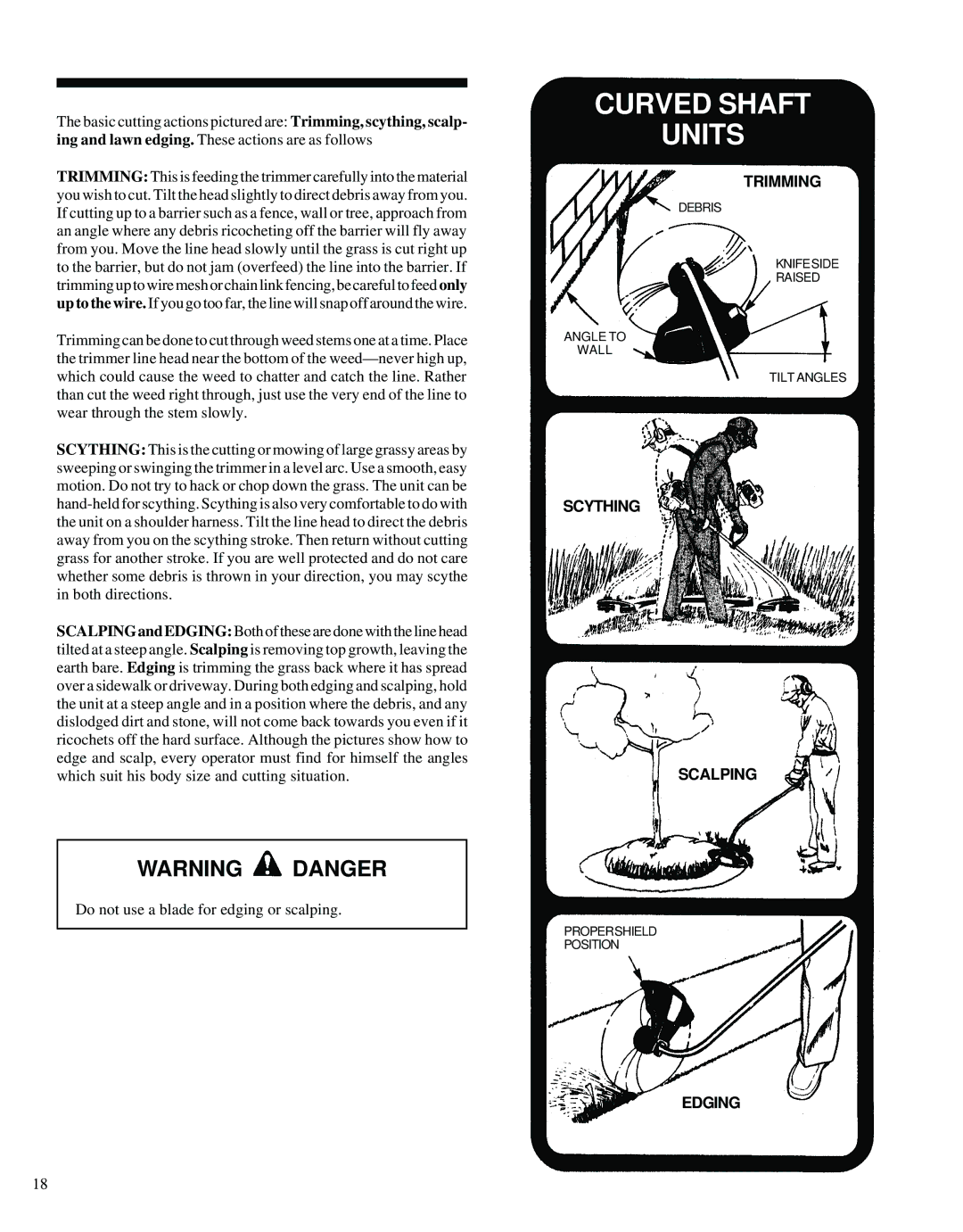GRASS/WEED TRIMMER BRUSHCUTTER and CLEARING SAW specifications
The Echo GRASS/WEED TRIMMER BRUSHCUTTER and CLEARING SAW is a remarkable piece of outdoor power equipment designed for those who need high-performance tools for landscaping, gardening, and land clearing. Echo, a reputable brand in the outdoor power equipment industry, is known for its innovations and reliability, and this model is no exception.One of the standout features of the Echo trimmer and brushcutter is its powerful engine. Equipped with a professional-grade 2-stroke engine, users can expect robust performance and efficiency. This engine is designed for high torque, delivering the necessary power to tackle thick grasses and stubborn weeds with ease. The engine’s advanced technology ensures lower emissions and reduced fuel consumption, making it an eco-friendly option for environmental-conscious users.
The unit comes with a range of attachments, allowing for versatility in use. The trimmer head can be easily switched out for different blade types, including a brush blade for thicker vegetation and a string head for trimming grass along edges. This adaptability ensures that users can seamlessly transition between tasks without needing multiple tools.
Comfort and user-friendliness are crucial considerations in the design of the Echo Grass/Weed Trimmer. The unit features an ergonomic handle with anti-vibration technology, which reduces fatigue during extended use. The adjustable harness further enhances comfort, distributing weight evenly and offering better control during operation.
Another notable technology in the Echo brushcutter is its easy-start system, designed to reduce the effort needed to start the engine. This feature is especially beneficial for users who may struggle with traditional starting methods. Enhanced fuel efficiency and a large-capacity fuel tank extend the runtime, allowing users to complete tasks without frequent refueling.
Durability is a key characteristic of Echo products, and this trimmer is built to withstand the rigors of outdoor work. The materials used in construction are designed to resist wear and tear, and the unit is engineered to operate under demanding conditions. This reliability ensures that users can depend on their Echo trimmer for years to come.
In conclusion, the Echo Grass/Weed Trimmer Brushcutter and Clearing Saw offers a combination of power, versatility, and user comfort. With its high-performance engine, adaptable attachments, cutting-edge technologies, and durable design, it is an excellent choice for anyone looking to maintain their outdoor spaces effectively. Whether you are a professional landscaper or a dedicated homeowner, this tool is sure to meet and exceed your expectations.

